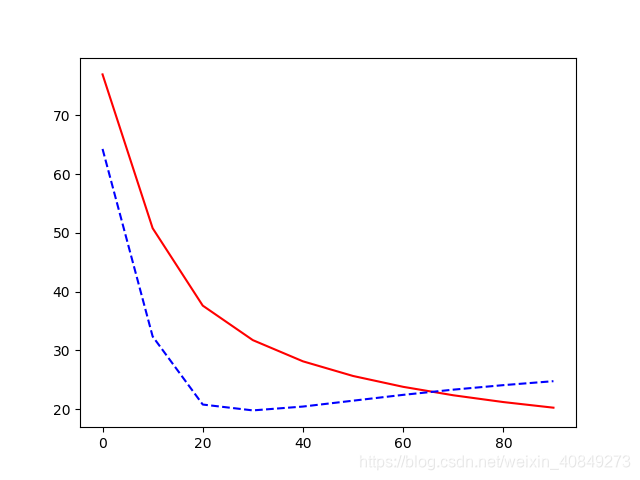theano學習之正則化
阿新 • • 發佈:2018-12-28
先上程式碼:
from __future__ import print_function import theano from sklearn.datasets import load_boston#波士頓房價資料 import theano.tensor as T import numpy as np import matplotlib.pyplot as plt #定義類層,套神經網路 class Layer(object): def __init__(self, inputs, in_size, out_size, activation_function=None): self.W = theano.shared(np.random.normal(0, 1, (in_size, out_size))) self.b = theano.shared(np.zeros((out_size, )) + 0.1) self.Wx_plus_b = T.dot(inputs, self.W) + self.b self.activation_function = activation_function if activation_function is None: self.outputs = self.Wx_plus_b else: self.outputs = self.activation_function(self.Wx_plus_b) #對x各個特徵標準化處理 def minmax_normalization(data): xs_max = np.max(data, axis=0) xs_min = np.min(data, axis=0) xs = (1 - 0) * (data - xs_min) / (xs_max - xs_min) + 0 return xs #載入資料 np.random.seed(100) x_data = load_boston().data # minmax normalization, rescale the inputs x_data = minmax_normalization(x_data) y_data = load_boston().target[:, np.newaxis]#[:,np.newaxis]的意思是有列表結構變為矩陣形式 print(x_data) print(y_data) #把資料集分為訓練集,測試集,交叉驗證,檢驗模型是否學習好了,也可以用來篩選合適引數 x_train, y_train = x_data[:400], y_data[:400] x_test, y_test = x_data[400:], y_data[400:] x = T.dmatrix("x")#如果這一步中的x裡面沒被喂值,涉及到x的程式碼都是空的,因為沒資料去跑 y = T.dmatrix("y")#如果這一步中的x裡面沒被喂值,涉及到x的程式碼都是空的,因為沒資料去跑 #建立模型 l1 = Layer(x, 13, 50, T.tanh) l2 = Layer(l1.outputs, 50, 1, None) #代價的計算 cost = T.mean(T.square(l2.outputs - y)) #不加正則化的代價函式 # cost = T.mean(T.square(l2.outputs - y)) + 0.1 * ((l1.W ** 2).sum() + (l2.W ** 2).sum()) # with l2 regularization # cost = T.mean(T.square(l2.outputs - y)) + 0.1 * (abs(l1.W).sum() + abs(l2.W).sum()) # with l1 regularization gW1, gb1, gW2, gb2 = T.grad(cost, [l1.W, l1.b, l2.W, l2.b]) learning_rate = 0.01 train = theano.function( inputs=[x, y], updates=[(l1.W, l1.W - learning_rate * gW1), (l1.b, l1.b - learning_rate * gb1), (l2.W, l2.W - learning_rate * gW2), (l2.b, l2.b - learning_rate * gb2)]) compute_cost = theano.function(inputs=[x, y], outputs=cost) #各種資料儲存 train_err_list = [] test_err_list = [] learning_time = [] for i in range(100): train(x_train, y_train)#把資料喂到網路中去訓練 if i % 10 == 0: # record cost train_err_list.append(compute_cost(x_train, y_train))#用訓練資料計算代價,一旦執行這個程式碼,x和y中就有值了 test_err_list.append(compute_cost(x_test, y_test))#用訓練資料計算代價,一旦執行這個程式碼,x和y中就有值了 learning_time.append(i) #畫出代價 plt.plot(learning_time, train_err_list, 'r-') plt.plot(learning_time, test_err_list, 'b--') plt.show()
結果:

以上程式碼用波士頓房價作為資料,實現正則化。
